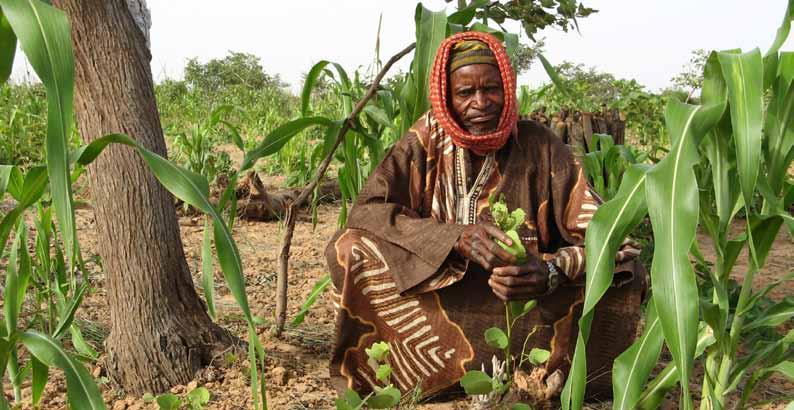
2 minute read
Underground Forests That Restore Soil Biodiversity
from Land for Life
ethioPia
visualize severely degraded land and images of bare denuded lands— no trees and no plants, conjure it up in your mind. But according to Tony Rinaudo, who pioneered farmer-managed natural regeneration (FMNR), these degraded woodlands and farmlands are often hiding vast “underground forests” just waiting to spring into life to restore the land. Look closely at these bare landscapes and you are likely to find small shrubs sprouting from tree stumps, or roots buried under the ground. But these are usually missed or mistaken for weeds and are burned or cleared before planting crops.
Advertisement
In Rinaudo’s FMNR method, however, through culling and nurturing, these tiny shrubs grow into resilient multipurpose trees that eventually restore the land to full productivity. According to Rinaudo, the first step is to assess each of the germinating stumps, taking note of the types and numbers of each species. Next, the stumps to be used for regeneration are identified and tagged so that the community spares them. About five or so of the tallest and straightest stems of the selected stumps are identified and pruned, while the rest are culled. Crops are then cultivated around the stumps. The stems grow over time and provide a protective barrier to the environment and for crops. Pruning provides the community with sources of fodder, fuel, or building materials. However, whenever a stem is cut, the rule is to nurture a new young stem to replace it.
FMNR repairs the land by increasing woody vegetation and biodiversity as well as improving the soil structure and fertility through leaf litter and nutrient recycling. As trees grow, they curb erosion and serve as windbreaks that decrease soil moisture evaporation and protect crops and livestock from harsh climatic elements. Eventually, springs reappear and water tables are restored.
Rinaudo stumbled upon the idea in the early 1980s in Niger. He observed that these indigenous shrubs and stumps were “just waiting for some care
to grow.” With the cooperation of a few willing farmers back then, his theory proved right, and within 20 years, this form of land regeneration had spread to over 5 million hectares of land in Niger. The successful trial run on nearly 3,000 hectares in Ethiopia led the government to make a commitment to restore over 15 million hectares of degraded land using Rinaudo’s approach. The results are quick and dramatic, especially where they are combined with other sustainable land management techniques. In Ethiopia, for instance, the communities were picking fruits, animals were returning, and erosion and flooding were in decline within two years. Moreover, the technique is effective not only for drylands, but in nondryland ecosystems as well. World Vision, where Rinaudo has been working for the past 14 years, has trained thousands of farmers in FMNR in 14 countries and diffused the technology successfully to countries like Indonesia, East Timor, and Myanmar. FMNR is a revolutionary land restoration technique with vast untapped potential for investment.
Web site: www.worldvision.com.au











